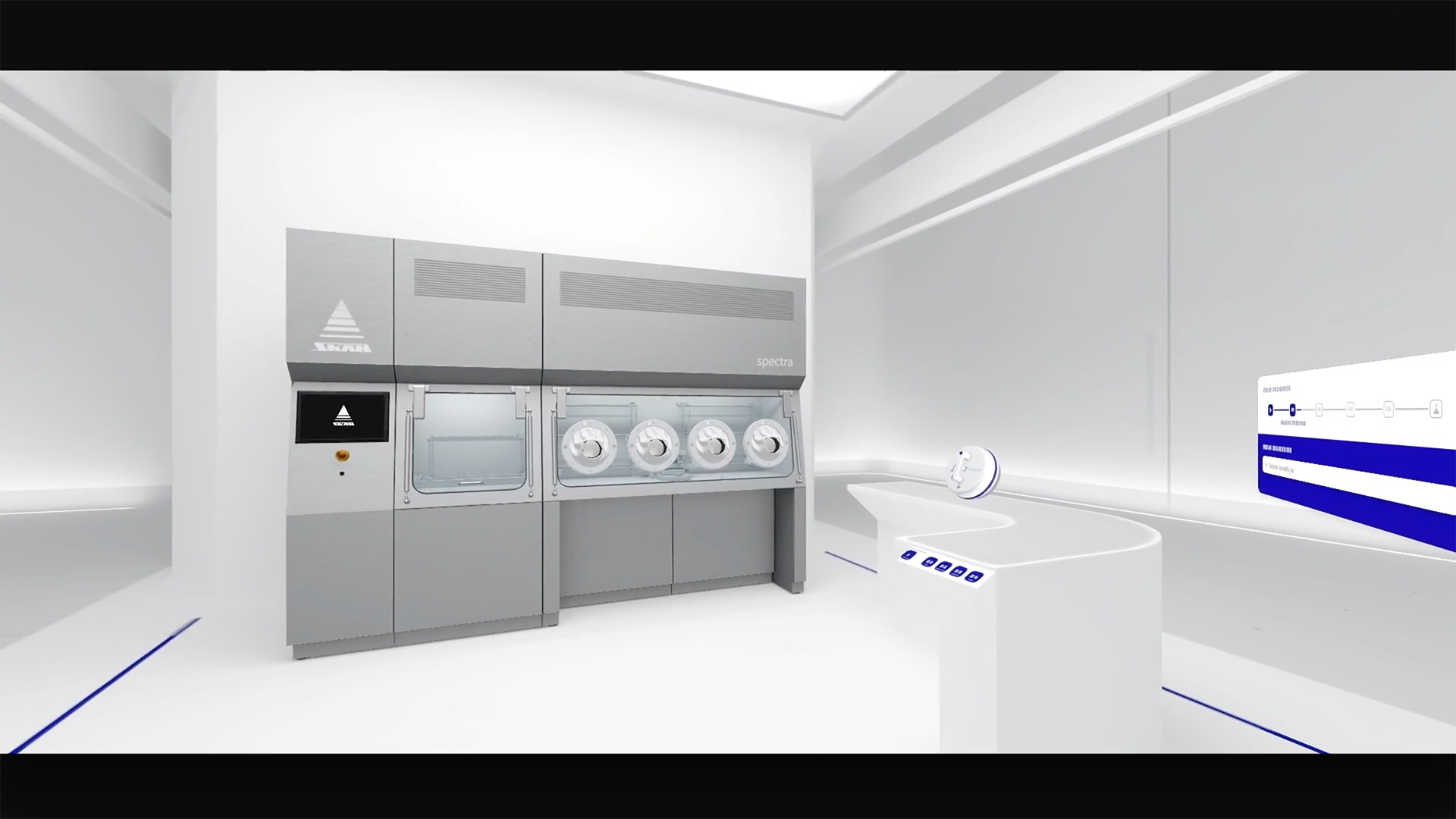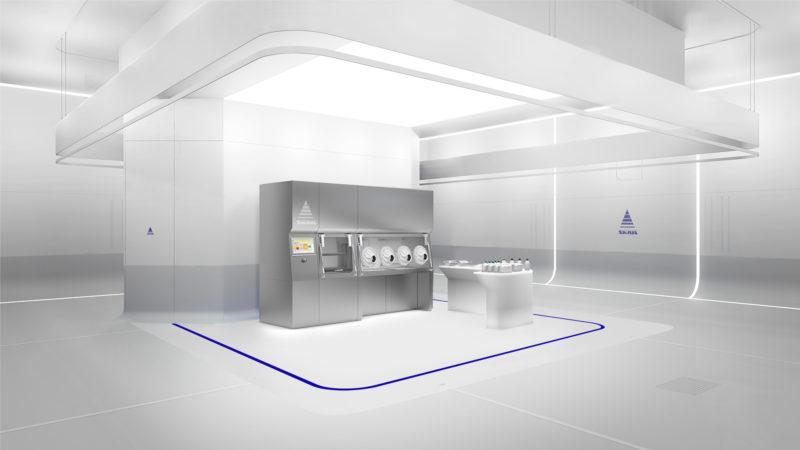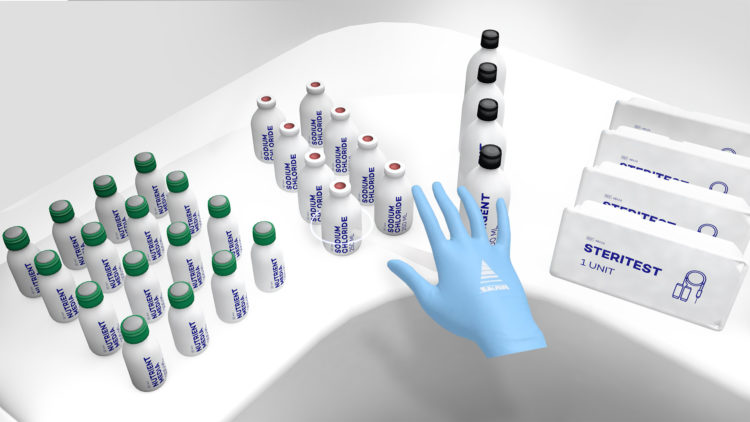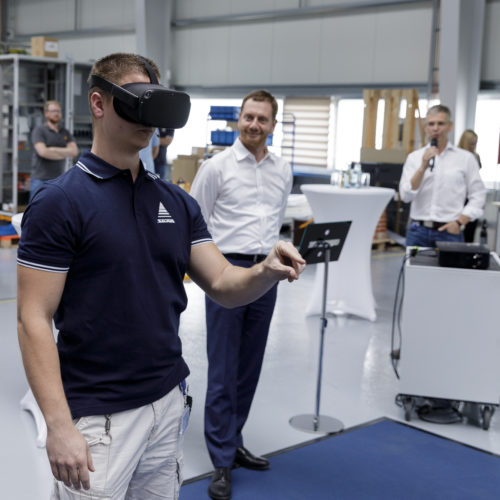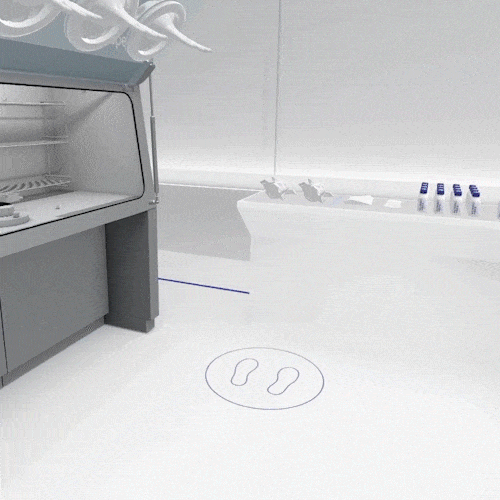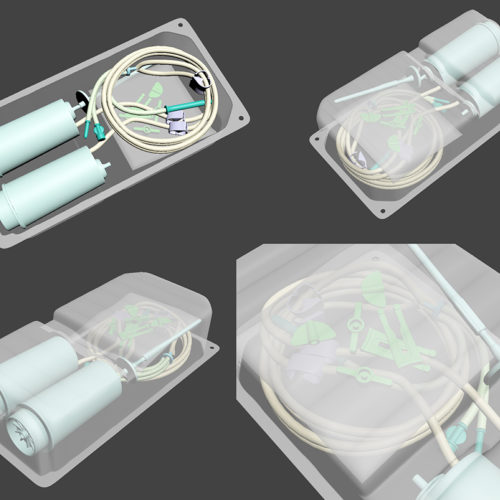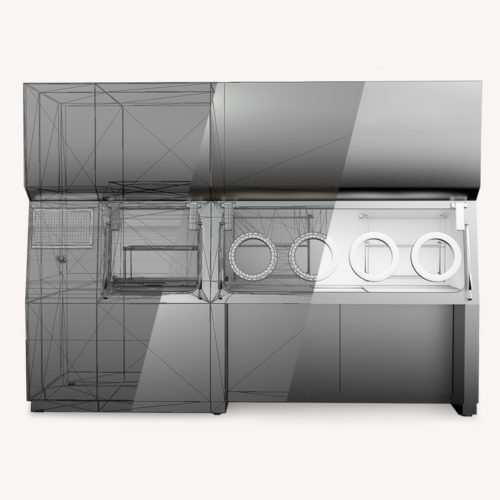Virtual Reality eLearning Experience
For SKAN, the market leader in pharmaceutical isolators, we created an interactive virtual reality learning tool for machine operators that can be used by anybody, anywhere. Unlike the machines, which have to stay in one place. The elearning tool had to be true to life, since any operator mistakes can be expensive. So we got rid of the hand controllers typical for VR, and used hand tracking. Making learning, testing, and simulating the isolator in spatial computing, feel more realistic than ever.
A more efficient educational process
Learning on complex medical technical machines is a big challenge. Being big, expensive, and almost always in use, training on them means literally switching them off and sacrificing on valuable production time. And especially in cases like this: time means money. To add to this, these machines have very custom instruction manuals, which need to be followed meticulously to avoid making costly or dangerous mistakes. Until now, a real machine has been necessary to learn. Even for trainees it’s a challenge. They have to travel across the country or continent to the machines to learn about them. No matter which way you look at it: there was room for optimization.
Developing the content
Based on different input sources from SKAN, we essentially transformed a combination of verbal briefings and detailed paper documentation into an immersive learning experience going beyond what they had to date. Just like in real life, the application consisted of different chapters, each with different steps, completed sequentially one after another. Each step was fleshed out with more detail on the watch outs and dangers you'd be confronting if it were a real life training situation. An information board in the VR application gives you an overview of your learning goals to hand. Including the contents you've already learnt, and those you still have to complete the training.
Using hands in VR
Hand and gesture control is the Holy Grail of interaction design. After all that's how we intuitively interact with the round of world around us in real life. Thanks to the Oculus quest’s hand tracking, which tracks not just the position of both hands, but even the movement of each finger, we could achieve this. Gestures like “grab”, “pick up”, “place” or “hang” could be intuitively understood when spoken by narrator, and required no additional user interface.
Light hardware, big challenge
After a technical research and evaluation phase, combined with early prototyping, we decided on the new Oculus Quest. The device works without cables, complex to set up sensors, or additional expensive computers. It’s also completely mobile, and can be sent to different companies and places all over the world, with minimum complexity.
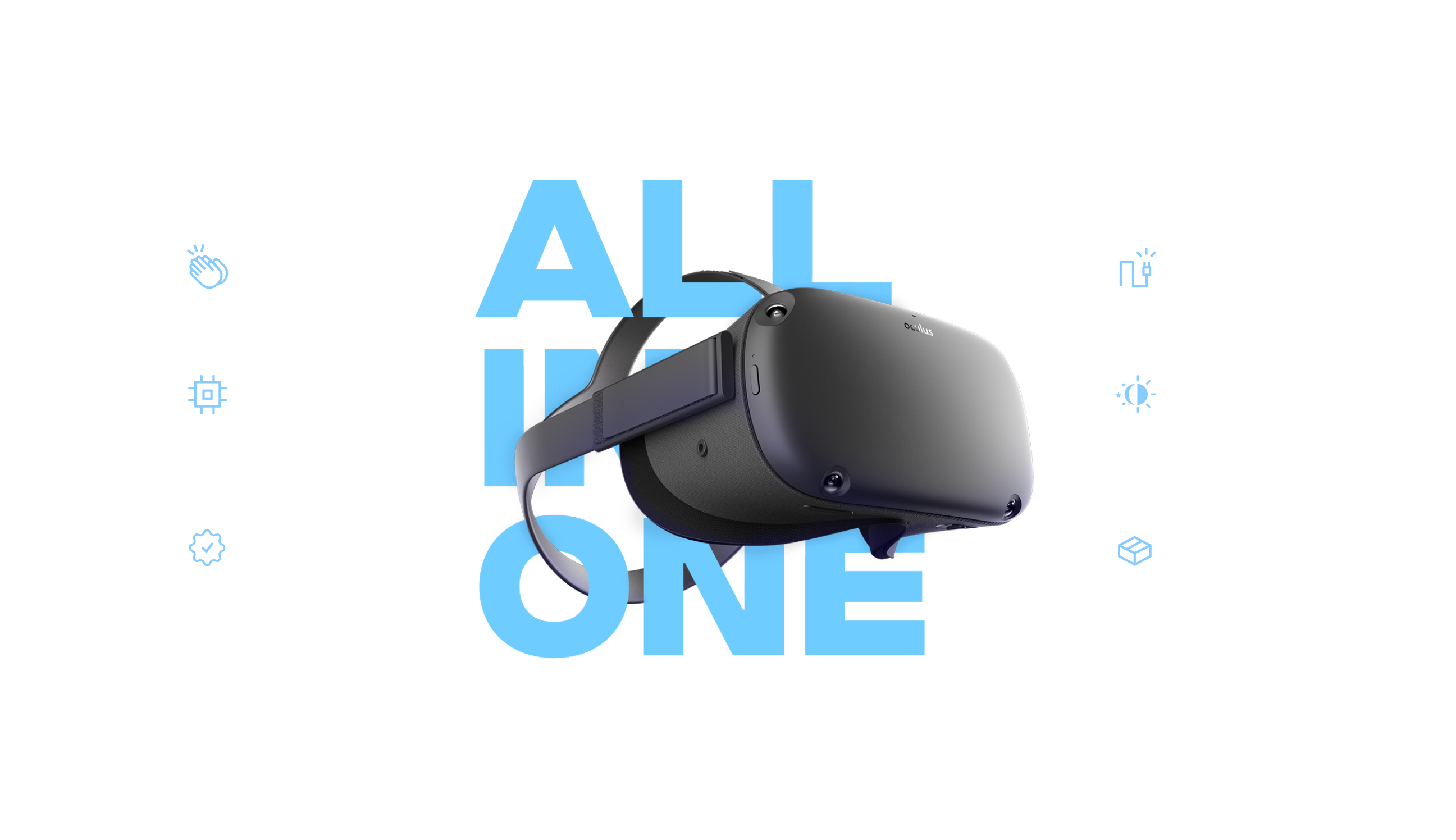
Design and modelling for Spatial Computing
Together with a concept artist, we designed the room, and replicated the environment in 3D. The challenge was to translate this high visual quality into the Oculus Quest. Since it doesn't have a separate gaming computer like other VR set-ups, and it's processing power is embedded in the glasses themselves, there are certain limits to its capabilities. We had to constantly find the balance between performance and realism. A challenge especially when it comes to more complex materials like reflective glass or brushed steel. To do this, we used the Unity engine’s universal rendering pipeline. And combined it with the Dynamic Fixed Foveated Rendering (DFFR) of the Oculus Quest.
Development of a VR CI for interactive props
Virtual reality provides specific challenges for product visualisations, as texts need to be more placative and simplified to be readable. Instead of seeing this as a problem, we leveraged the opportunity to create a unique CI and product design especially for VR. Characterised by a unique boldness, to stand out within the minimalistic VR environment.
Beyond Proof-of-Concept
What started as a proof-of-concept transformed to an application capable of training people all over the world using nothing but their own bare hands and a mobile VR headset.
